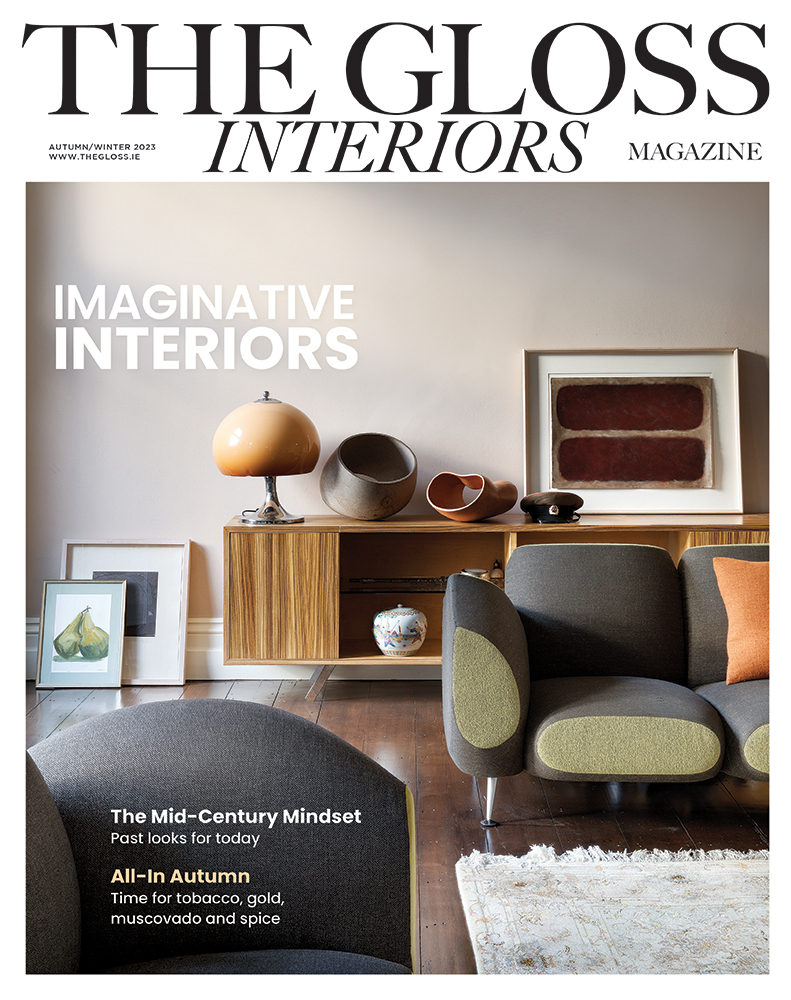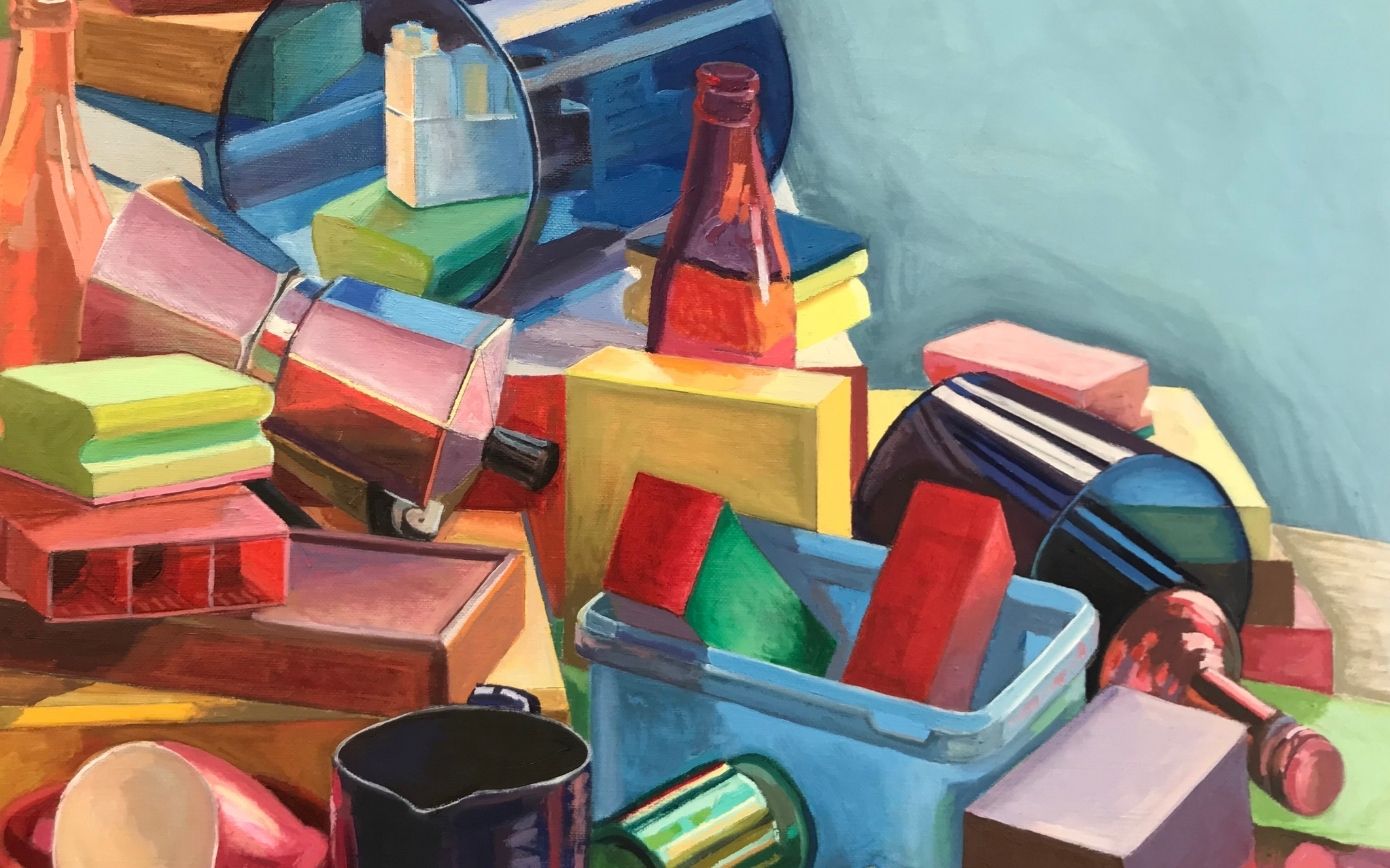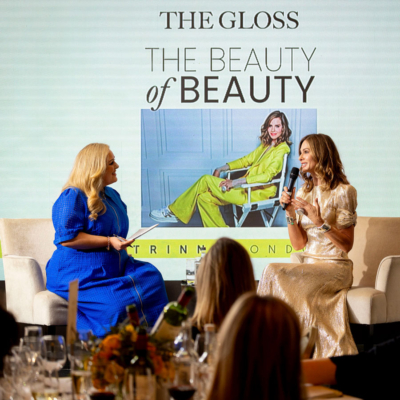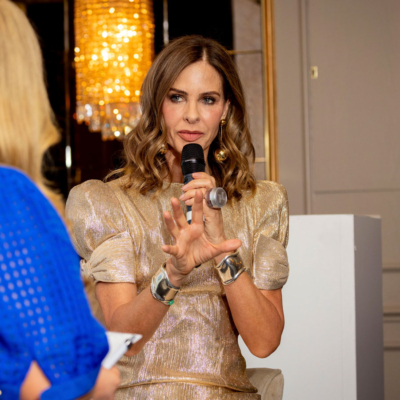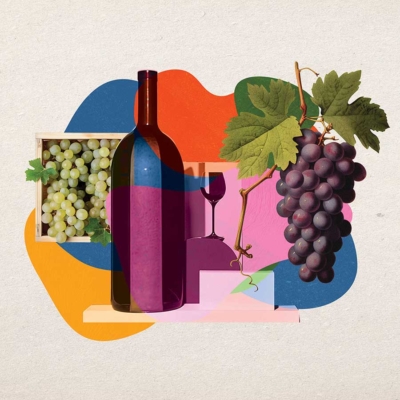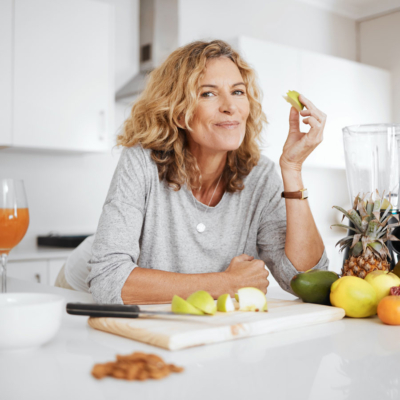The still life and figurative paintings of the Dublin-based artist explore the sense of wonder in the ordinary …
Where and how do you work?
I have a studio at home, which gets the most wonderful light especially in the afternoon and evening. It has a southerly aspect and is an oasis of peace and calm overlooking the garden. I can see roses, shrubs and potted plants and the tops of parkland trees.
I mainly work from observation. Before I begin a still life painting, I build a freestanding structure of recycled forms on a large table, consisting of colourful books, folders, boxes and empty food containers. I can spend a day working on this structure to get it right. Overtime I add and subtract forms until a satisfactory structure is completed. Photography and viewfinders help me plan and establish the composition. At the beginning I photograph the structure to evaluate its effectiveness and suitability for painting. Using an iPad or iPhone helps to crop and manipulate the image on screen. Then I can easily adjust its exposure, light and heighten its brilliance, brightness and saturation using the camera editing facility. I then begin to draw and redraw this structure from direct observation on my easel canvas. I work mainly with oil paint on stretched linen canvas. Dispensing with preparatory drawings and thumbnail sketches, I make all my alterations and modifications directly onto the linen surface of the canvas. I wipe away fluid oil paint with a cloth and rework an area of the painting to modify and change it. My main concern is that the composition must have vitality and be dynamic. The changing and evolving light suggests a richness and variety of colour which enhances the three dimensional structure.

I also use photography in my figurative and portraiture work. I always make initial sketches of the figure and face of the model. Then I take a series of photographs. In portraiture lighting is so important. Sometimes a family member or the model may want a specific book or heirloom included in the background of the portrait. I use a grid to make an accurate enlargement of the figure and face on canvas and use photographic references for colour and tonal rendering. Photography is a tool and has to be subservient to the overall compositional demands of the painting. Some of my figurative and portraiture work will be included in my new exhibition “The Sense of Wonder in the Ordinary.”

What was the starting point of your new works?
Henri Matisse compared the contemplation of a painting to the experience of sitting in a comfortable armchair. The perception of the painting should make the viewer feel relaxed and exhilarated. Colour is a vital element in my painting and that’s why I repeatedly go back to look at the paintings of Henri Matisse, Andre Derain, Pierre Bonnard, Wayne Thiebaud and Richard Diebenkorn. The temperature of the colour, its transparency and opaqueness are important qualities. Glazing, scumbling and rubbing are techniques I use. Areas of colour are built up in overlapping layers to achieve the correct vibrancy, saturation and brightness.
Before I started I collected colourful discarded objects. I went into the L’Occitane shop and asked for empty boxes which are a lovely cadmium yellow colour. I collected coloured large Lego and coloured glass from charity shops. I collected recycled packaging at home. So all my most recent work was mainly done from direct observation.
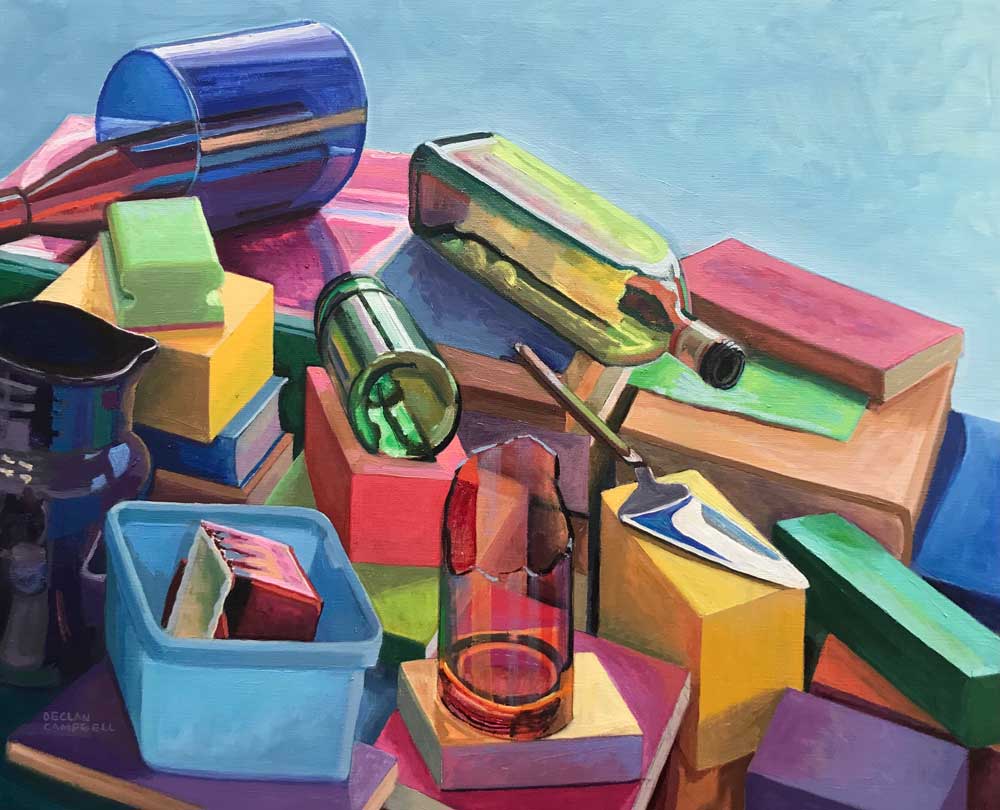
Your new exhibition was also references the poetry of Patrick Kavanagh …
Like Patrick Kavanagh I come from the country; I like the outdoors and enjoy walking. I don’t listen to podcasts when I am walking. Instead, I want to concentrate on the moment and observe experiences around me such as the distorted reflection of the plume of a jet plane on the surface of the pond in Blackrock Park or, during the pandemic, an empty DART travelling back and forth resembling the strange, surreal atmosphere of a scene from a Giorgio De Chirico painting.
I have always loved Patrick Kavanagh’s poetry. In his poem “Canal Bank Walk” Kavanagh wants to “wallow in the habitual, the banal” and describes the bright stick trapped in the canal water. In his other great poem “Lines written on a Seat on the Grand Canal Dublin” he describes the “stilly greeny canal water of summer/ A swan goes by head low with many apologies / Fantastic light looks through the eyes of bridges.”
Kavanagh observes and describes the ordinary everyday experiences around him and invests them with an extraordinary significance. Like Kavanagh, I identify and am captivated by ordinary everyday clutter, junk and discarded consumer packaging sometimes left here and there around our homes. The most mundane and discarded items can be given a new significance in painting. Packaging can be very colourful and as interesting as any other natural forms. In the 1960s, the late Charles Brady, an American artist living in Ireland, began painting still life everyday objects such as envelopes and tickets. He made the insignificance monumental and permanent.

Need to Know: “The Sense of Wonder in the Ordinary” by Declan Campbell opens at The Ireland Institute, 27 Pearse Street, Dublin 2, on April 1; www.declancampbell.net.
LOVETHEGLOSS.IE?
Sign up to our MAILING LIST now for a roundup of the latest fashion, beauty, interiors and entertaining news from THE GLOSS MAGAZINE’s daily dispatches.

